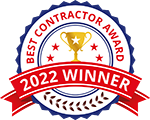
When choosing the right siding for your home, you want an option that is stylish, durable, and energy-efficient. Unless you have the time to frequently clean, repair, and repaint the exterior of your home, then you’ll want a low-maintenance option too.
Due to modern advancements in home construction, today’s siding options are increasingly strong, efficient, and easier to maintain. How do you know which siding type is best for your home? To begin, you will want to compare your options.
Below you will find information about four of the most common siding types, along with the benefits and drawbacks of each. Which siding is your favorite?
Vinyl Siding: No More Scraping and Painting
Vinyl siding came on the scene in the 1950s as a low-maintenance alternative to wood, and this option has grown in popularity since. Unlike wood that requires scaping and painting every five to ten years, vinyl siding:
- Retains its original color without cracking, chipping, or peeling.
- Resists weather and insect damage that leads to warping, rotting, and deterioration.
- Offers a cost-effective exterior remodeling solution when compared to other siding options.
Downsides: Traditional vinyl siding can become damaged by extreme heat and cold; fluctuations lead to cracks. Siding can also become damaged by impacts, and when damaged or improperly installed, vinyl siding can harbor moisture which leads to mold growth and water damage.
Insulated Siding: Save on Energy Bills
Traditional siding provided some protection for the home, but there was room for improvement. In comes insulated vinyl siding. This siding option is more durable and manufactured with energy efficiency in mind. For this reason, insulated vinyl siding:
- Maintains the indoor temperature of your home; warmth will not escape through the walls of your home and the cold air will not get in.
- Provides a noise barrier that keeps your home quiet and comfortable.
Downsides: Insulated vinyl siding is more expensive than traditional vinyl siding, and it is more difficult to install.
Fiber Cement Siding: Give Your Home Advanced Protection
The downfalls of traditional vinyl siding are addressed by this modern option. Fiber cement siding is made of a blend of cellulose fiber, cement, sand, and silica. This heavy-duty material is long-lasting and highly energy-efficient. In general, fiber cement siding:
- Is flexible, offering strong resistance to weather damage.
- Resists pests, moisture damage, and impact damage.
- Reduces energy-waste for lowered heating and cooling costs.
Downsides: Fiber cement siding is one of the more expensive siding options and requires professional installation to ensure a water-tight seal and lasting results.
LP SmartSide: Enjoy the Look of Real Wood
When you prefer the warm look of wood, but you don’t want to deal with costly and difficult maintenance, then LP SmartSide is the way to go. This engineered wood siding option is:
- Treated with resin, waxes, and zinc borate which protects against damage from water, weather, and pests.
- Highly-durable and able to resist damage from impacts, such as hail.
- Resistant to termites, mold, mildew, and fungus.
Downsides: Treated wood cannot be painted, so once you make a color selection, you are stuck with it unless you replace your home’s siding. You are also limited to wood-grain styles.
Which Low-Maintenance Siding Option is Best for Your Home?
As you can see, you have a variety of siding options to choose from. When you want something easy and affordable, traditional vinyl siding is the way to go. If you want an upgrade in energy-savings, then you might opt for insulated vinyl siding. For superior durability and energy-savings, you can’t beat fiber-cement siding. If you want the look of real wood without the maintenance, treated wood options such as LP SmartSide is a good choice.
Could you use some help choosing the right siding for your home? To learn more and to request a free design consultation and project cost estimate, contact XL Contracting today!
Subscribe to XL Contracting's Blog









Comments